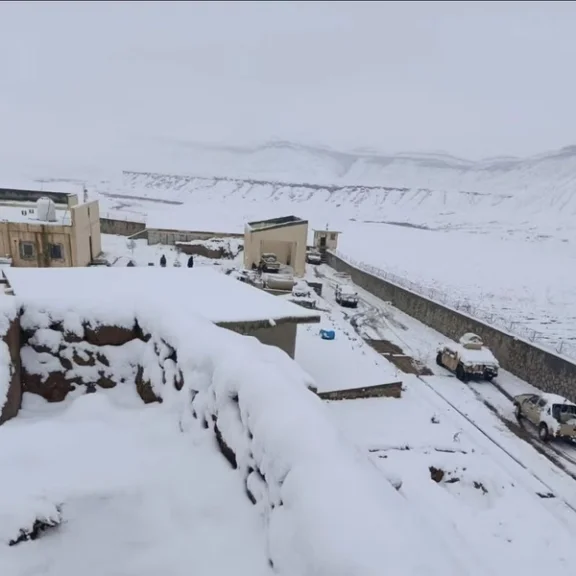In George Orwell’s 1984, the authoritarian figurehead known as “Big Brother” surveils every citizen, not just to monitor, but to manipulate, silence, and erase dissent. Today, this metaphor has migrated from dystopian fiction into legislative reality. Nowhere more chillingly than in India’s Information Technology Act, 2000, specifically Section 69A, a provision that now operates as a digital instrument of erasure for such voices which the state finds inconvenient.
South Asia Times’ X (formerly Twitter) account has been blocked from visibility in India under this very clause, without explanation, recourse, or transparency. While our removal may be one case among many. But the law that enables such unchallenged censorship reveals a profound crisis of democratic accountability in one of the world’s largest democracies.
A Law for E-Commerce, Weaponized for Censorship
Originally passed to address cybercrime and promote digital commerce, the Information Technology Act, 2000 has evolved into a powerful tool of state surveillance and information control. Section 69A ostensibly exists to protect India’s “sovereignty and integrity,” but its application has been far more elastic and opaque. It allows the Central or State Government, or any authorized agency, to issue orders requiring any intermediary, read: “Social media platforms, telecom firms, internet service providers,” or even individual subscribers to monitor, intercept, or decrypt any form of digital communication.
In theory, this sounds like a tool for national security. However in practice, it’s a mechanism for bypassing judicial oversight, undermining user privacy, and silencing dissent, often under the guise of vague threats to public order or national unity. This reach extends far beyond what even India’s colonial-era Indian Telegraph Act permitted. Section 5(2) of that act limited state interception to five narrowly defined scenarios: protecting national sovereignty, preserving state security, maintaining friendly relations with foreign nations, ensuring public order, or preventing incitement to commit offenses. By contrast, the IT Act introduces a sixth, nebulous provision: the “investigation of crime.” This open-ended clause exponentially expands the scope of government surveillance. Given the vast number of ongoing investigations across the country at any moment, nearly any form of communication can now be surveilled or blocked.
Surveillance Without Borders or Timelines
One of the most troubling aspects of Section 69 is its technological ambition. Unlike the Indian Telegraph Act, which confined interception to telecom networks, the IT Act empowers authorities to engage not only with intermediaries but also directly with users, a move that shifts the balance of power drastically in favor of the state.
Worse still, Section 69A permits the storage of intercepted data, creating a permanent archive of monitored communication. Though orders are nominally valid for 180 days, in practice, once data is accessed, it remains in the state’s possession indefinitely, eroding the very concept of temporal limits on surveillance. And there’s more to this act. Section 69(4) criminalizes non-cooperation with investigative agencies, prescribing up to seven years of imprisonment for refusal to assist in surveillance activities. This coercive clause has no equivalent in the Telegraph Act and stands out for its severity. It effectively forces intermediaries and individuals alike to become extensions of the surveillance state, whether or not they believe in the legitimacy of the order they are asked to enforce.
Secret Orders Perpetuated In Silenced Voices
The practical effects of this legislation are already being felt. Social media platforms have removed or restricted access to dozens of accounts and posts within India, journalists, NGOs, activists, researchers, and now think tanks. None of these takedown orders are public. None are subject to meaningful legal challenge. Neither platforms nor the government are obligated to disclose what was removed, or why.
This opacity has prompted growing alarm. Subramaniam Vincent, Director for Journalism and Media Ethics at Santa Clara University, notes that the Indian government “Has made it clear that it is the arbiter of truth on matters it deems as the government’s domain.”
He adds that the lack of transparency on both sides, government and platform, is “an anti-democratic use of power by a legitimately elected dispensation.”
Echoing this concern, Anant Nath, President of the Editors Guild of India, describes the recent wave of X account takedowns as symptomatic of a wider and more dangerous trend: “The last three years in India have witnessed a rise in the fabrication of laws that hinder journalistic freedom. The government has vested itself with the discretionary power to remove any content online… and that is the genesis of the problem.”
A Democracy at the Brink of Autocracy
India’s journey from a post-colonial republic to a global digital power was built on a foundation of free expression and open discourse. But when the state exercises the right to silence, rather than the duty to listen, democracy begins to erode, not with a bang, but with a silent takedown notice. This is no longer about content moderation. It is about narrative control.
The blocking of our X account is not the story. It is a prodrome. The real story is about a law that allows a government to act as judge, jury, and executioner in the digital space, with no transparency, no accountability, and no room for contestation. A law that punishes silence. That rewards submission. That normalizes surveillance.
Orwell’s dystopia was terrifying not because it was unfamiliar, but because it was entirely plausible. If we have learned anything from that vision, it is this: when Big Brother watches, he does not do so to protect but out of its fervor to control.
The solution lies in citizens, lawmakers, digital rights defenders, and the international community to scrutinize the expanding digital powers of modern states. Section 69A is not merely an Indian issue, in reality, it is a case study in how democracies can legislate their way into authoritarianism, one secret order at a time.






